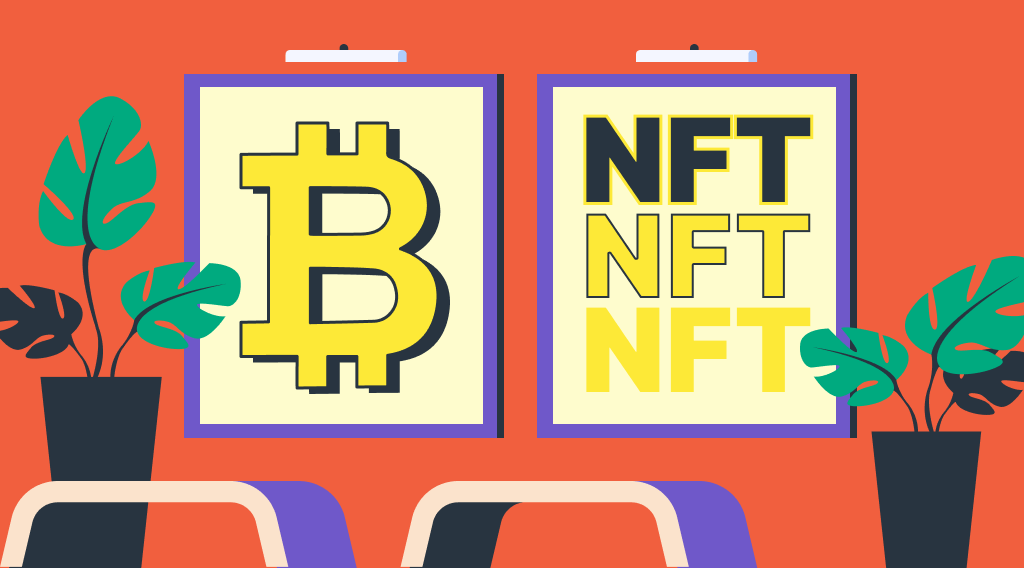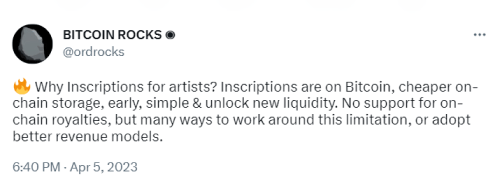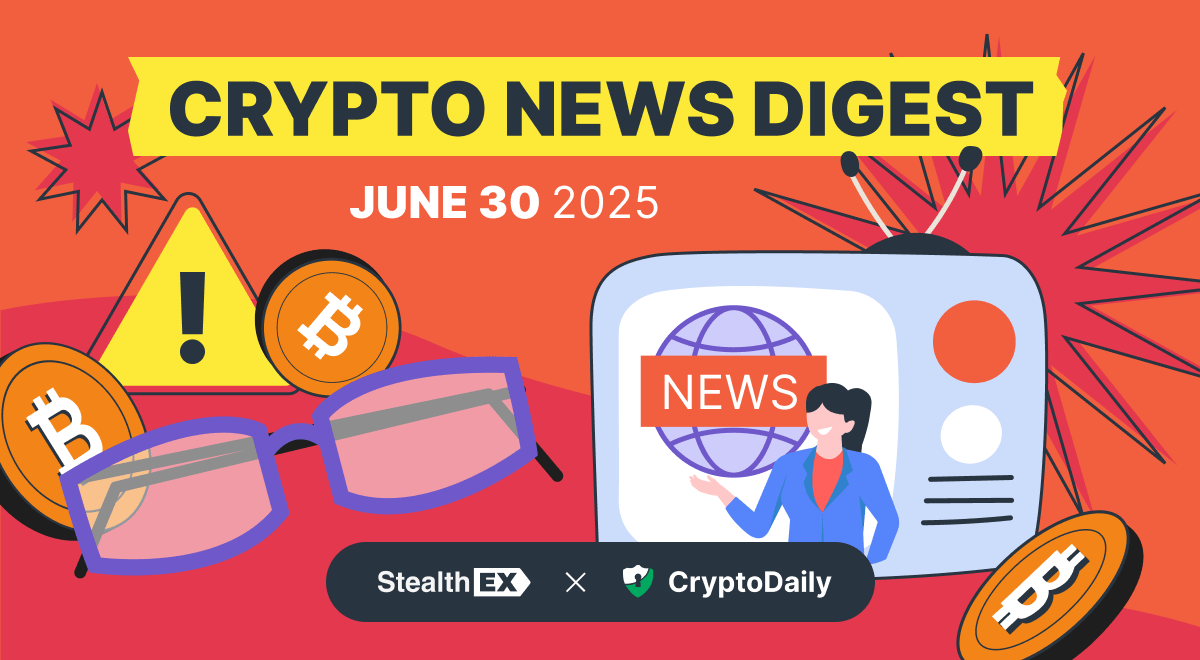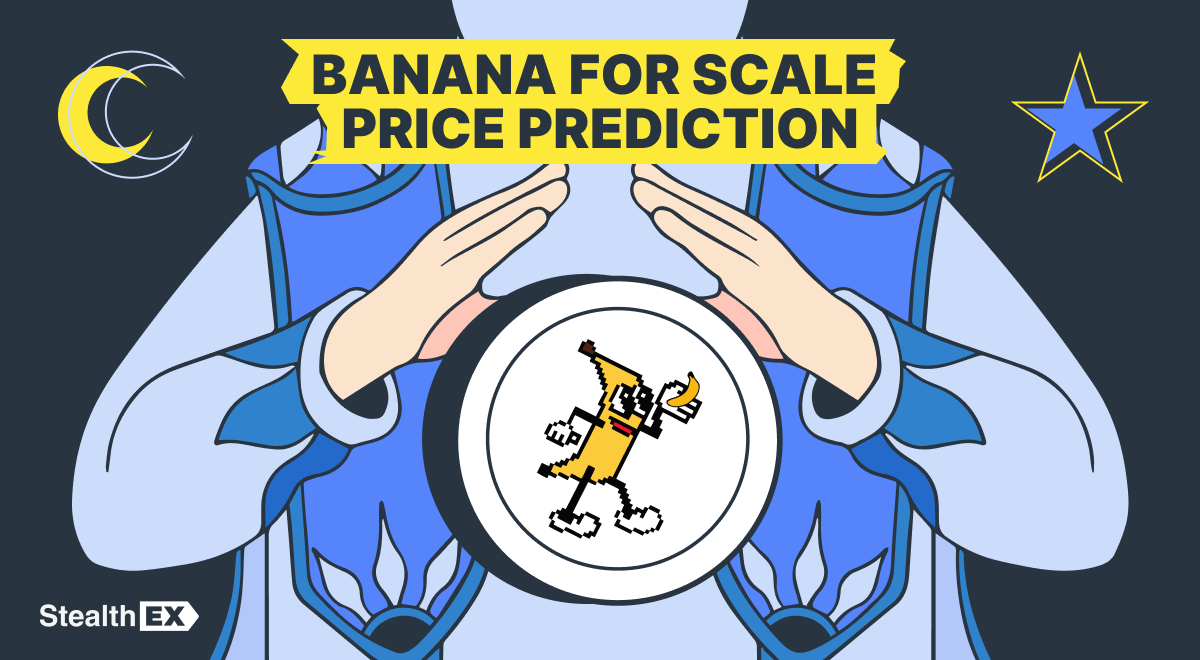Exploring Bitcoin Ordinal NFTs: A New Crypto Trend

Non-fungible tokens (NFTs) have become popular a few years ago, and these were mostly Ethereum-based. However, recently another wave of popularity started with the so-called Bitcoin NFTs, which are also known as Bitcoin Ordinal NFTs or Bitcoin Ordinals. Bitcoin NFTs were created on the Bitcoin blockchain. Even though they are not native to this network and require additional set up, they are nonetheless very secure and have gained traction in the last few months. So what are Bitcoin NFTs and how did they come about in the first place? StealthEX decided to take a closer look at these mysterious NFTs.

Article contents
Bitcoin Ordinal NFTs: Revolutionizing On-Chain Art Ownership
First of all, let’s once again remember what NFTs are. NFTs are blockchain tokens that can serve as a proof of ownership for assets, including digital goods like artwork, videos, music files, and memberships.
Ordinals were launched in January, and their growth surged in February 2023, with some claiming that Bitcoin NFTs are way superior to regular NFTs. Unlike Ethereum NFTs, which depend on off-chain metadata that can be modified, Ordinals on Bitcoin enable all data to be inscribed directly on-chain. However, the Bitcoin blockchain doesn’t even support non-fungible tokens, to begin with. So how can they be attached to the blockchain?
Well, basically Bitcoin NFTs are messages or inscriptions on the blockchain. Designed by Casey Rodarmor, a former Bitcoin Core contributor, Ordinals enables users to explore, transfer, and receive individual satoshis (the smallest unit of Bitcoin, or 1/100,000,000 of a BTC), which may include data such as videos and images. Adding assets to individual satoshis is called inscription, which is stored in a Bitcoin transaction’s signature.
Not many took initial liking to the idea of filling Bitcoin blocks with JPEGs and videos. Some crypto enthusiasts believe that putting NFTs directly on the Bitcoin network will drive up transaction costs. However, many others claim that such ‘inscriptions’ can be beneficial for artists and web designers.

How Do Bitcoin NFTs Work?
In essence, the NFTs are made possible by the Segregated Witness (SegWit) and Taproot updates to the Bitcoin Protocol, which took place in 2017 and 2021, respectively. The Taproot upgrade was aimed to improve the platform’s privacy and efficiency, opening up a slew of opportunities for Bitcoin developers to build applications native to the network. That has enabled people to inscribe certain data, including images and texts, into transaction data to create an NFT that can be traded and gifted on the Bitcoin blockchain.
To understand how ordinal NFTs work, it’s important to make a distinction between the terms ‘ordinals’ and ‘inscriptions,’ both of which are used to refer to this new type of Bitcoin NFT.
Ordinals are a system for ordering satoshis in a way that creates the ‘non-fungible’ property necessary to create NFTs. Inscriptions are the contents of the ordinal NFT itself: the image, text, video, or any other arbitrary data that a user would consider synonymous with an NFT.
These NFTs can be best understood by drawing a parallel to non-Bitcoin NFTs, which are unique, 1-of-1 tokens that generally have two components: tokenID and metadata.
Bitcoin Ordinals: A New Way to Buy NFTs
Buying Bitcoin Ordinals is different from getting other NFTs. Here is what you will need to do. If you’re interested in collecting or inscribing Bitcoin Ordinals, you’ll need a Bitcoin Ordinals wallet, and block explorer (Ord Wallet). An Ordinals wallet is a blockchain wallet that supports the Ordinal protocol that Bitcoin NFTs are built on. It should also support the crypto you’ll buy Ordinals with, which is BTC. There is a variety of Bitcoin wallets for storing NFTs, including Ordinals Wallet, Xverse Wallet, Generative Wallet, Hiro Wallet, Sparrow Wallet, and more.
First, Ord Wallet will keep track of any privately owned ordinal NFTs. You can connect it with any Bitcoin address type, including a variety of wallets mentioned above. Once a crypto enthusiast has the wallet set up, they can head to the official Discord server which has over 3K members to join one of the specific channels for buying and selling.
When ready to purchase a couple of brand new Ordinal Bitcoin NFTs, a prospective buyer can get in touch with one of the people listed in these channels. They’ll provide an invoice and once the buyer pays it off (usually with Bitcoin or Ethereum), they will transfer their Ordinals tokens to the wallet address provided. Moreover, you can buy NFTs on Bitcoin on marketplaces, such as Gamma and OpenSea.
The Value of Bitcoin Ordinals Explained
Let’s take a look at how Bitcoin Ordinals can be useful:
- They have market demand. NFT transactions are something the market wants, and if this is a poor use of block space that generates no value, these transactions would slow down or be priced out as miners prefer to include standard transactions in blocks making ordinal transaction bidding much higher.
- They attract new users. With inscriptions, the Bitcoin network can capture market share from other smart contract chains and pull that value into Bitcoin. It may also bring users to Bitcoin who have ignored the chain because it didn’t offer NFTs and encourage users to purchase BTC so that they may pay inscription fees, move their NFTs around and trade them with others, driving demand for BTC.
- They drive more fees for miners. Clones of popular NFT projects from other blockchains like CryptoPunks and Bored Ape Yacht Club NFTs have found their way to Bitcoin, and these often have an enormous price tag.
- They accelerate layer 2 adoption. Inscription advocates also claim that since they’re paying for the use of additional block space and driving up transaction fees, they are increasing the security budget for miners. The increased prices will benefit Bitcoin’s overall security model by providing income for miners after the Bitcoin block subsidy shrinks with each halving.
The Downsides of Bitcoin Ordinal NFTs
Unsurprisingly, there are a number of cons associated with possessing a Bitcoin NFT. As such, they:
- Drive up cost for block space. The argument against inscriptions is that it will make it harder for node operators to run full nodes, it will increase fees and bloat the chain. Over time, that leads to higher technical requirements to run a full node can lead to further centralisation for the set of full nodes verifying the chain.
- Bring in more speculation. As mentioned earlier, clones of the older Ethereum NFTs are sold with a crazy price tag. This speculation could see capital flow into trading ordinals rather than storing value in Bitcoin.
- Can affect satoshi fungibility. Ordinals can alter the value of satoshis by adding additional data that encourage people to pay over market rates for that satoshi. This could result in a market for rare collectable satoshis versus standard satoshis.
- Add additional tracking to Bitcoin. The more data points you create, the easier for chain analysis firms to keep an eye on you. In ordinals, you create a serial number for satoshis and then add additional data that can be attributed to your wallet and your bitcoin; you’re advertising yourself online and making your on-chain behavior easier to track.
Bitcoin NFTs: Trend or Lasting Impact?
While Bitcoin NFTs are certainly the latest trend, it’s still unclear what properties they can bring to the market in general or if they have staying power at all. It remains to be seen if the novelty carries over into a real ecosystem where wallets support inscriptions and platforms exist at scale to promote the creation and sale of the various NFTs. Nonetheless, the crypto industry keeps developing and coming up with new ideas during the current crypto winter, promising greater potential for the market.
If you’re looking for a convenient instant crypto exchange to buy some Bitcoin so that you could purchase a Bitcoin Ordinal NFT later, you can try StealthEX: this non-custodial platform offers over 700 digital assets and no-KYC purchases.
Just go to StealthEX and follow these easy steps:
- Choose the pair and the amount you want to exchange. For instance, USDT to BTC.
- Press the “Start exchange” button.
- Provide the recipient address to transfer your crypto to.
- Process the transaction.
- Receive your crypto coins.
Follow us on Medium, Twitter, Telegram, YouTube, and Publish0x to stay updated about the latest news on StealthEX.io and the rest of the crypto world.
Don’t forget to do your own research before buying any crypto. The views and opinions expressed in this article are solely those of the author.
Bitcoin crypto world cryptocurrency NFT NFT marketplaceRecent Articles on Cryptocurrency
 Bakkt Files $1B BTC Buy, GameStop Raises $2.7B, Ripple-SEC End 5-Year Fight
Bakkt Files $1B BTC Buy, GameStop Raises $2.7B, Ripple-SEC End 5-Year Fight  Banana For Scale Price Prediction: Can BANANAS31 Coin Hit $1?
Banana For Scale Price Prediction: Can BANANAS31 Coin Hit $1? 